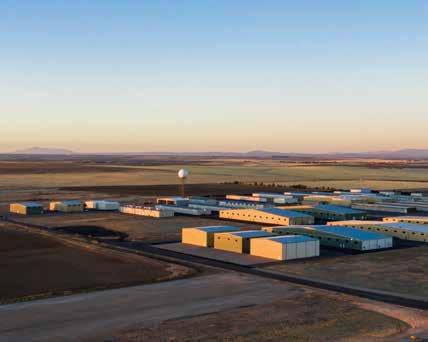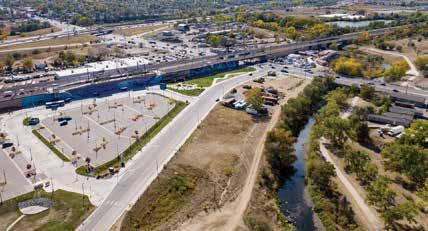
2 minute read
GOALS, POLICIES, AND STRATEGIES
Policy BEC 3.1: Adams County’s policy is to support development that is cognizant of existing hazards and responds to the growing risks posed by climate change and continued encroachment into the natural interface.
• Strategy BEC 3.1.01: Growth should be focused in a way that minimizes adverse impacts on the natural environment, provides for energy e ciency and green building techniques, and protects residents from hazardous areas.
• Strategy BEC 3.1.02: Discourage new developments located within the FEMA flood plain. Continue participation in the National Flood Insurance Program Community Rating System and maintain any related and applicable community certifications or designations.
• Strategy BEC 3.1.03: Encourage private landowners to grant maintenance and flowage easements to entities such as the Mile High Flood District or Public Works to allow for proper management of floodplain areas.
• Strategy BEC 3.1.04: Discourage new residential developments located within proximity to air quality contaminants, such as heavy industrial areas, railyards, and high-polluting roadways. Reduce indoor and outdoor air quality impacts on disproportionately impacted communities through advocacy and mitigation practices. Explore alternatives for existing residences, including possible relocation, when severe air-quality impacts cannot be mitigated.
• Strategy BEC 3.1.05: Support preparedness strategies for areas at highest risk for a variety of manmade and natural disasters, such as wildfire, chemical spills, and flooding.
• Strategy BEC 3.1.06: Review building code and development standards for storm shelter requirements, specifically in related to tornadoes for use in new commercial and industrial buildings. Consider the number, spacing, and access during an event in larger buildings and “tiltup” style construction. Consider updating relevant codes when appropriate.
• Strategy BEC 3.1.07: Evaluate mitigation, building, and maintenance tactics when hazardous conditions may potentially exist and coordinate with property owners to lower that risk, including through education.
• Strategy BEC 3.1.08: Support remediation e orts on brownfield and contaminated sites and encourage viable uses that further county goals and community benefits. There may be times when existing conditions, including but not limited to landfills or properties within a flammable gas or natural resource conservation overlay, may undermine the Plan’s stated development goal, and in those instances existing and future development will need to accommodate these existing conditions.
• Strategy BEC 3.1.09: Coordinate with applicable health department and agencies to monitor environmental conditions and public health outcomes when appropriate.
• Strategy BEC 3.1.10: Prioritize and plan for green infrastructure and sustainable infrastructure in public and private projects. Explore activating and utilizing infrastructure for community benefit and connectivity beyond the primary purpose of stormwater management, and hazard mitigation. For example, consider activating drainage basins to become parks and trails assets. Consider planning and leveraging viaducts as trail connections as well as flood ways.

• Strategy BEC 3.1.11: Plan for a climate that is hotter, more prone to drought, and produces more extreme weather events. Support community amenities that consider refuge from heat events, such as cooling stations, water pads, and shade. Evaluate building and development codes to strengthen resilient and sustainable building design, energy e ciency, and environmental standards.
• Strategy BEC 3.1.12: Review development regulations with local FAA sta to ensure regulations are current and consistent.










